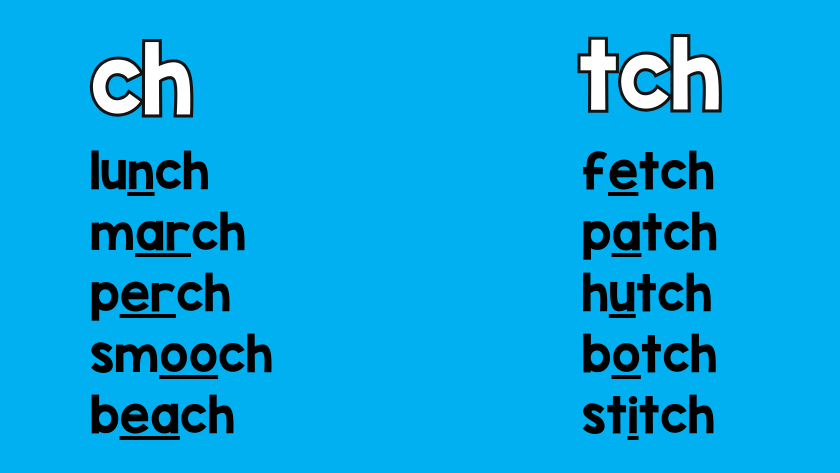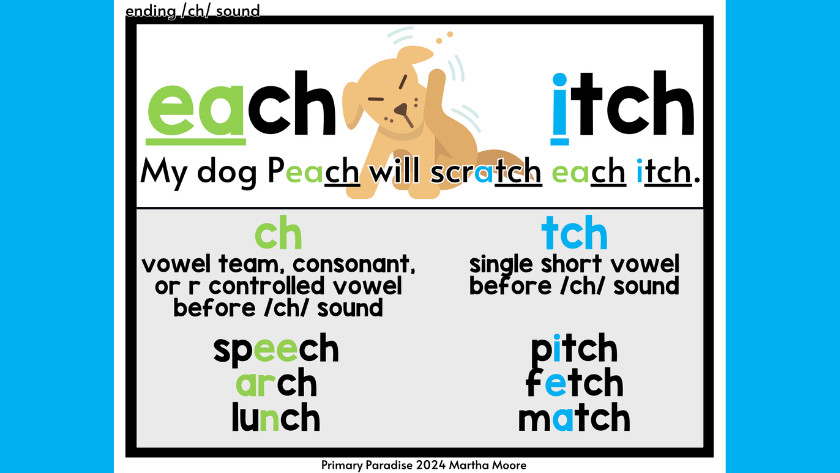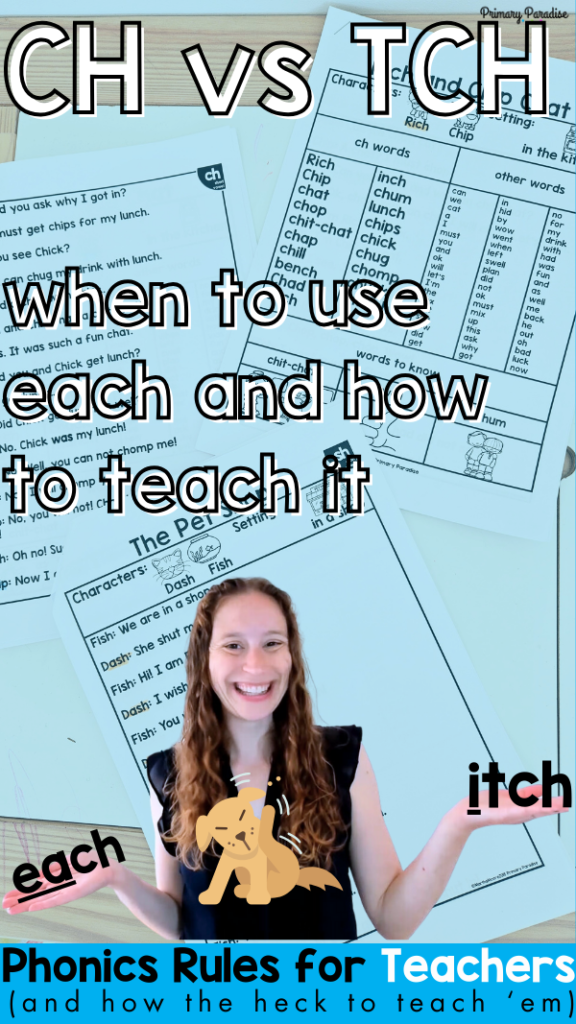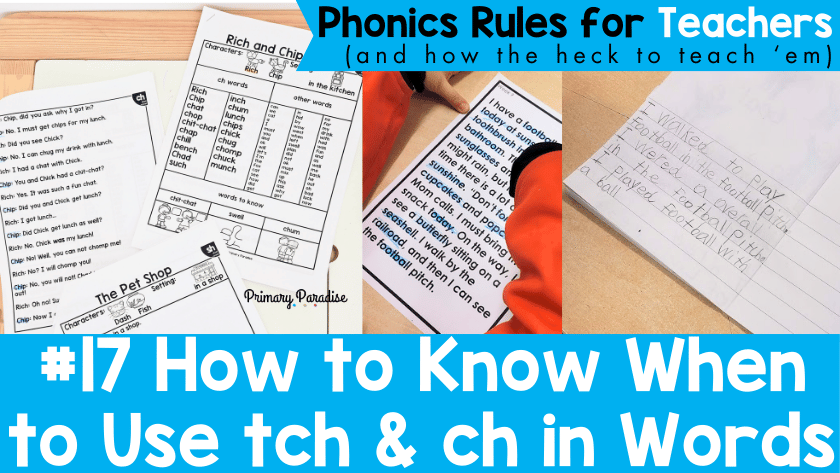Teaching students when to use ch or tch can seem tricky. Is there a simple, clear phonics rule? Today we’ll look at how to know when to use tch vs ch and how to teach this to your students.
This is post 17 in my series Phonics Rules for Teachers (and How the Heck to Teach ‘Em). If you’d like to see previous posts, you can click here.
Would you rather listen or watch? Find a podcast version of this blog post or watch the video below.
Ways to spell /ch/
In English, we spell the /ch/ sound with a ch or a tch. We can also sometimes spell /ch/ when a u follows a t such as in century or virtue, but that’s less common. When we hear a /ch/ sound in the beginning of a word or syllable, that is spelled with ch. However, the ending /ch/ sound can be spelled with both ch and tch. So, how can we know which to use and when?
When to use ch and tch

Here’s how to know when to use ch at the end of the word. Typically, when the /ch/ sound is proceeded by a consonant or a vowel team or r controlled vowel, we spell that with ch. Some examples are crunch, church, reach, and pooch.
Here’s how to know when to use tch at the end of a word. Typically, when the /ch/ sound is proceeded by a single short vowel, we spell it with a tch at the end of a word or syllable. Some examples are pitch, fetch, kitchen, touch, inch and scrunch.
However, there are some words that are exceptions where we spell a /ch/ sound after a short vowel with ch. Some examples are such, much, rich, and which. Let’s look at some numbers. There are 382 words in English where /ch/ is spelling with a ch as expected. 63 words in English that have tch spelled as expected. There are 9 words that spell /ch/ with a ch after a single short vowel- which, much, such, rich, attach, detach, bachelor, duchess, and lecherous.
Here is the great thing about teaching students these rules that typically govern the English language. When they do come across exceptions, they have a handle of words to spend more time learning. They don’t need to try to memorize hundreds and hundreds of words. Instead, they can learn the rules with an understanding that this is usually or typically how certain spelling patterns are used. Then they can spend a little extra time on words that don’t fit the typical rule. This is where understanding morphology, where words come from, and having strong background knowledge can make a big difference as well.
Activities to teach ch vs tch
So, the question is: how do you teach ch and tch to your students? As always, the goal is to help students understand simpler and more common sounds first. Then they can move to less common and more complex sounds. Once students have a firm understanding of the digraph ch, and they have practiced working with this spelling pattern, you can also introduce tch.
Use the Each Itch Prompt

First, review the digraph ch and talk about the sound it spells- ch. Have students think of some words with that sound. As they say words, write them on the board. Inevitably (or maybe with some guidance from you) a word with a tch spelling will come up. When that happens, make a new column. Once you have a few tch words, ask students if they notice anything about which words end in ch and with words end in tch.
Your students might notice the pattern on their own if they’re used to looking closely at spelling patterns. If not, you can explain it to them. Typically, the /ch/ sound is spelled with tch at the end of a word when it’s proceeded by a single short vowel letter. The rest of the time, we spell /ch/ at the end of a word with ch.
You can then share the Each Itch Rhyme with them to help them remember. As with any new sound, you can then practice working with it together using a variety of strategies. Some examples are word mapping, decodable texts, targeted journal entries, word sorts, snowball fight, hunting for words in books, and musical sentences. You can add the tch sound to your daily sound drill as well. (If you want to learn more about these activities, you can visit the Phonics Rules for Teachers hub here.)
While it might seem complicated, understanding when to use tch and ch comes down to understanding vowels and spelling patterns. Once students know what to look for, they’ll be pros at reading and writing tch and ch words.




